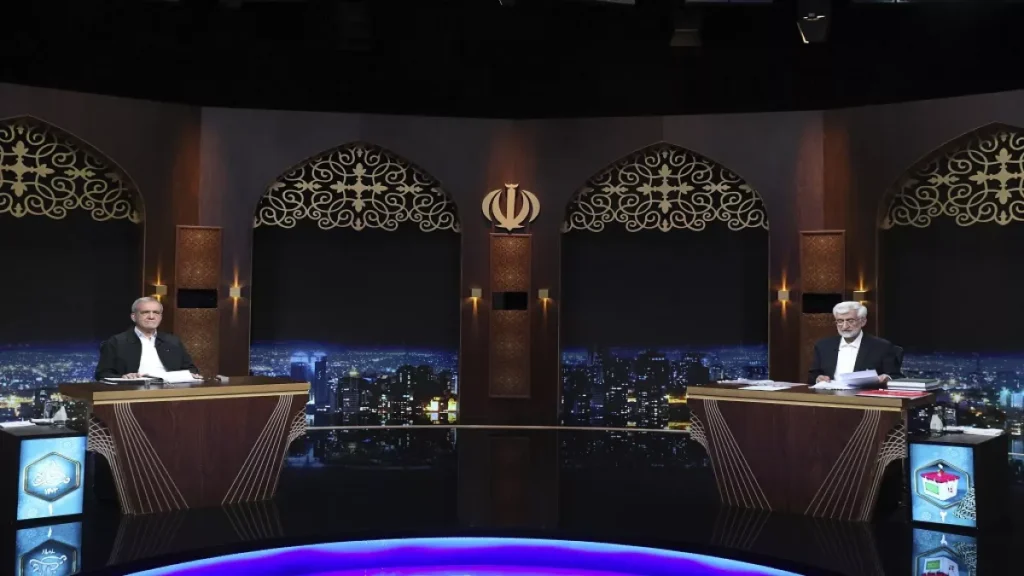Tehran, Iran – Supreme Leader Ayatollah Ali Khamenei addressed the record low turnout in Iran’s recent presidential elections, asserting that the high abstention rate does not signify opposition to the ruling system. Over 60% of eligible voters abstained, marking the lowest participation in the Islamic Republic’s history.
This Friday, a run-off election will determine the successor to the late President Ebrahim Raisi, who died in a helicopter crash in May. The contenders are hard-line former nuclear negotiator Saeed Jalili and reformist Masoud Pezeshkian, a heart surgeon. Pezeshkian’s supporters emphasize the necessity of widespread voter turnout to secure his victory, while Jalili is bolstered by an endorsement from Parliament Speaker Mohammad Bagher Qalibaf.
“I did not vote and I will not, since nobody apologized because of Mahsa and later miseries that young people face, neither the reformists nor the hard-liners,” said Leila Seyyedi, a 23-year-old university student.
Iranian election law requires a candidate to secure over 50% of the vote to avoid a runoff. In the initial round, Pezeshkian received 10.4 million votes, Jalili garnered 9.4 million, Qalibaf got 3.3 million, and Shiite cleric Mostafa Pourmohammadi had over 206,000. Analysts predict most of Qalibaf’s voters will back Jalili, strengthening his position.
Jalili, known for his hardline stance and the nickname “Living Martyr” due to losing a leg in the 1980s Iran-Iraq war, faces skepticism for his recalcitrant reputation among Western diplomats. Meanwhile, Pezeshkian’s platform includes opposing police enforcement of the hijab and internet restrictions, resonating with some voters disillusioned by the government’s recent crackdowns.
“After years of economic difficulties, I have no interest in politics,” said Mohammad Ali Robati, a 43-year-old electronic engineer. However, he held out the possibility of voting on Friday.
Economic struggles are a significant concern. The rial has sharply depreciated, causing financial hardship for many. The currency exchange rate has plummeted from 32,000 rials to the dollar in 2015 to 617,000 rials today. This financial instability, coupled with persistent anger over the death of Mahsa Amini and the subsequent crackdown on protests, fuels public discontent.
The New York-based Soufan Center think tank notes that voter participation and blank ballots signify repudiation of regime policies, particularly its crackdown on dissent and enforcement of strict dress codes for women. Whether Pezeshkian’s appeals to voters will succeed in swaying the electorate remains uncertain.
As Iran prepares for the run-off, many voters express deep-seated skepticism about the electoral process and the candidates. The outcome of Friday’s election will reveal whether reformist promises or hardline persistence will prevail in shaping the country’s future.
